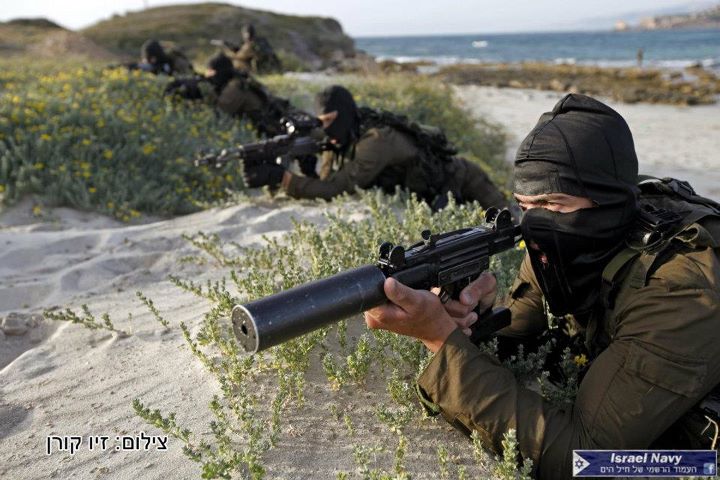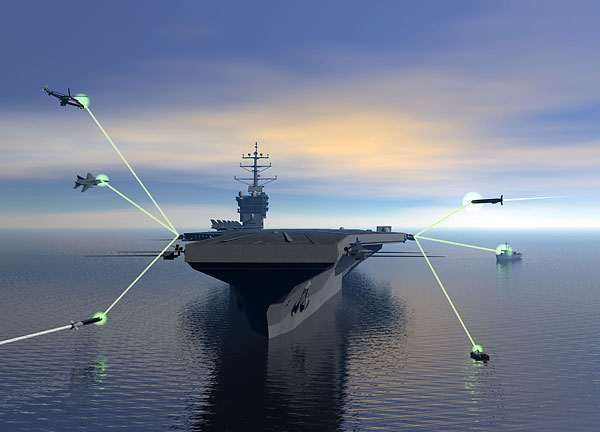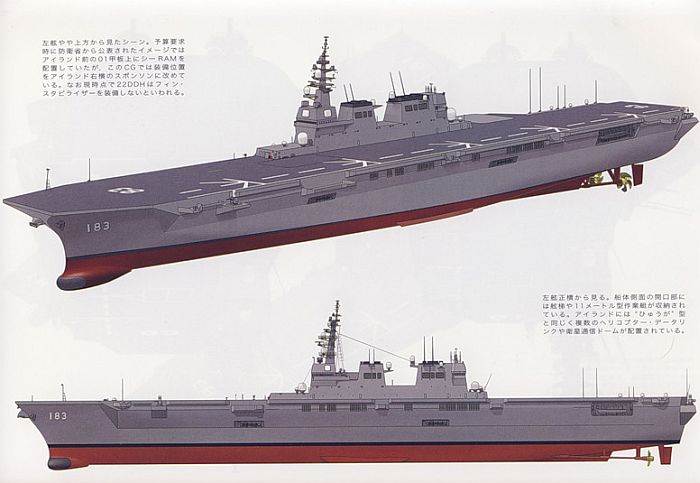By Iskander Rehman
One of the more enduring aspects of Indian strategic culture is a
strong sense of maritime embattlement. Shortly after independence,
Prime Minister Jawaharlal Nehru famously
attributed India’s past woes at the hands of predatory colonial powers to its maritime weaknesses.
During the Cold War, Indian strategists would fret over the potential
mushrooming of American submarine pens in Diego Garcia, or over the
possible reiteration of the
1971 USS Enterprise incident,
when the United States dispatched a carrier task group to the Bay of
Bengal in a singularly blunt exercise of naval suasion. More than forty
years later, the U.S. presence in the Indian Ocean is no longer viewed
by most Indians as a threat. Another, more menacing extra-regional power
has stepped in to fill the void, and, in so doing, has ensured the
continued survival of the maritime embattlement narrative.
Indeed, a first time traveler to India could be forgiven for
believing that India is on the verge of being subjected to a sudden wave
of Chinese amphibious landings. Sensationalistic press reports on
China's so-called “string of pearls” abound, and wild stories on
secret PLAN submarine bases in the Maldives, or large bases on Burmese islands, are commonplace. In reality, most of China’s
ventures in places such as Chittagong, in Bangladesh,
or Hambantota, in Sri Lanka, appear to be, for the time being at least,
primarily economic in nature. Moreover, Indian observers tend to
neglect the profoundly nationalistic pride these projects tend to foster
within the host countries themselves.
Last year, after having meandered through
the organized chaos of Hambantota, I interviewed the Sri Lankan Ports
Authority Manager on site. After enquiring whether Chinese military
vessels might, in the future, obtain preferential berthing rights, I was
subjected to a withering tirade on the inappropriate nature of my
query. While the
funding may be in large part Chinese,
the port itself is strictly Sri Lankan, I was sternly informed, and
acted as a powerful symbol of a reunified country’s future economic
potential. (The port is, in fact, named the Mahinda Rajapaksa Port, in
honor of Sri Lanka’s president, whose grinning, mustachioed face is a
ubiquitous presence throughout the country, from billboard to bank note.)
While one can’t discount the possibility in the future that these
nodes may acquire a more overtly military dimension, the relentless
onslaught of Indian media attention on the “String of Pearls” has
created an unfortunate, and rather paradoxical, effect. First of all, it
renders the debate over the nature of China’s future naval presence in
the Indian Ocean somewhat less intelligible and more inchoate. Second,
it makes it seem as though the Indian government’s attitude towards
China’s alleged creeping expansionism is purely reactive and bereft of
any clear strategic direction.
Let us imagine, thereby succumbing to the worst kind of strategic pessimism, that in the course of the next two decades China does move towards establishing some kind of a genuinely threatening naval presence in the Indian Ocean Region.
This could take several distinct forms:
-- A gradual upsurge in Chinese submarine incursions into the Indian
Ocean, with the option of secretly forward deploying wolf packs of
Chinese submarines in friendly deep-water ports such as Gwadar.
-- An extension of
China's Anti-Access/Area Denial (A2/AD) complex from East to West in order to provide some
form of a shore-based protective shield to its surface vessels or to target India’s ships and coastal infrastructure.
-- Simply by increasing the rotation and stationing of its naval
assets-surface or subsurface – in the friendly pearls aforementioned.
If one, or all of these evolutions were to occur, would India be
prepared for such a contingency? And more importantly, does the Indian
Navy have some kind of a concrete, actionable China Strategy in place
for the Indian Ocean?
It may.
But if it does, you will be hard pressed to find it outlined in
detail in any of the official documents released by the Indian Navy over
the past decade or so, whether it be the two iterations of its
Maritime Doctrines (released in 2004 and 2009) or in its
Maritime Strategy
(published in 2007). All three documents are highly didactic in tone
and somewhat aspirational in nature. Their goal, first and foremost, is
to convince a
traditionally continentalist and inward-looking Indian leadership
of the virtues of Indian Seapower, not to lay out the battle plans for a
potential future naval clash with the next great “Dragon Fleet.”
Therefore, when China is mentioned, it is only in passing, with
fleeting-albeit foreboding- references to “some nations’ attempts to
gain a strategic toehold in the Indian Ocean Rim” or to “attempts by
China to strategically encircle India.”
If one really wishes to get a better appreciation of how the Indian
Navy plans for an upsurge in naval rivalry with Beijing, the best thing
to do is to carefully parse the refreshingly sanguine words of India’s
naval chiefs on the matter. By so doing, one can begin to discern the
hazy silhouette of a nascent three-pronged strategy, or “strategic
trident,” which could roughly be summarized as the following:
-- Leveraging India’s Natural Geographical Advantage
-- Developing an Asymmetrical Technological Edge
-- Moving towards greater Navy/Air Force Jointness in the Indian Ocean Region
A few years ago, the former Chief of Naval Staff Sureesh Mehta created quite a stir, when he
gave a seminal speech
at an Indian maritime think tank, the National Maritime Foundation,
shortly before his departure from office. Admiral Mehta, in a very
eloquently framed presentation, articulated some compelling arguments:
First, India shouldn’t seek to compete ship for ship with China –
such an approach is futile and doomed to fail, due to the growing
disparity in funding in-between both navies. Second, India should
leverage its geographical advantage. In short, India will always retain a
sizeable advantage over any incoming Chinese fleet in the Indian Ocean
by virtue of its central position as
an interior line power
in the heart of the Indian Ocean, as well as its peninsular formation,
which enables it to radiate airpower in an arc ranging from the Arabian
Sea to the Malacca Straits. Any Chinese naval task force venturing into
the Indian Ocean would therefore have to run a formidable gauntlet of
combined Indian naval and shore-based airpower. Finally, India needed to
focus on developing an asymmetric technological edge over its Chinese
rival. New Delhi possesses an immense advantage over Beijing – in that
it can i
mport (nearly) all the weaponry it desires, and, unlike China, doesn’t have to contend with an EU arms embargo, U.S. rivalry or growing Russian unease.
India’s current Chief of Naval Staff,
Nirmal Verma, has added grist to the strategy
laid out by his predecessor by stressing the need to establish more
“turnaround bases and naval air enclaves” within the region, and by
accelerating the revamping of India's air bases in the Andaman and
Nicobar islands, which
Chinese strategists
have portrayed as a potential “metal chain” that could lock them out of
the Bay of Bengal in the event of a conflict with India.
As Sino-Indian rivalry spills out into the Indian Ocean, the maps of
former, similarly conflict-ridden eras, are being pulled out of the
attic of history, undusted, and made to overlap. Japan’s clever use of
the Andaman and Nicobar archipelago as an unsinkable aircraft carrier
during World War II is now being replicated by New Delhi, and World War
II era airbases in places such as
Kalaikunda, in West Midnapore,
have been refurbished in order to host Indian Sukhoi-30 MKI squadrons,
which can provide long-range air cover to naval forces operating in the
Andaman Sea west of the Malacca Straits.
The same minute patches of paradise at the epicenter of Soviet-U.S.
rivalry in the Indian Ocean Region during the Cold War, such as the
Seychelles, now find themselves at the heart of a struggle for supremacy
once more. Only this time it’s Beijing and New Delhi, Asia’s two rising
naval powers, which are jostling for influence. Competition in the
Indian Ocean is hardly a new phenomenon – the players may change, but
the game remains uncannily similar. And indeed, while much attention has
been lavished on China’s diplomatic forays into the Indian
subcontinent’s maritime backyard, scant focus has been given to India’s
own parallel efforts to establish strategically placed nodes of
influence – such as the listening post it erected in 2007 in Madagascar,
or the ties it is discreetly shoring up with other small island nations
such as Mauritius.
As the Indian Navy’s attention gradually pivots away from Pakistan in
order to focus increasingly on China, it will be instructive to note
whether this is accompanied by a corresponding repositioning of its
force structure. It may be premature to reliably ascertain whether this
is the case, but certain signs definitely seem to point to a
rebalancing. The Indian Navy's Eastern Command, for example, which has
traditionally been neglected in favor of its Western, Pakistan-facing
alter ego, is
being considerably strengthened. The country’s small flotilla of nuclear submarines will also operate from an
undisclosed location along the eastern seaboard.
Jointness, at this juncture, appears to form the missing link within
the Indian Navy’s nascent China Strategy in the Indian Ocean. Indeed, if
New Delhi wishes to truly leverage its inherent geographical advantage,
it needs to be able to draw on both its naval aviation and shore-based
airpower simultaneously rather than sequentially.
So far, unfortunately, the Indian Navy and Air Force have yet to
demonstrate any genuine capacity – or desire – for operational synergy.
In India’s defense, Navy/Air Force synchronization in maritime strike
warfare is notoriously hard to achieve. Indeed, one could argue that the
United States only really mastered such a level of operational
jointness
through the catalyzing experience of the first Gulf War.
The Indian Navy and Air Force, however, appear to have demonstrated a
singular degree of reluctance to pursue any kind of meaningful
operational synergy. While both services have initiated joint training
under the aegis of the
TROPEX exercises
annually held in the Bay of Bengal, they still prefer to coordinate –
rather than to genuinely fuse – their combat exercises. The Indian Air
Force and Naval aviation assets are thus provided with distinct,
pre-designated “air corridors” in which to operate and respond to the
instructions of their own service-specific commanders. This is
indicative of a very rudimentary level of inter-service cooperation,
which still prefers to opt for the traditional Indian “coordination”
model over the exigencies born out of genuine bi-service synchrony.
What India needs is a truly transformational war fighting concept for
the Indian Ocean, an “AirSea Battle concept with Indian
characteristics,” which welds the three “prongs” of its thinking into a
clear, actionable, China strategy for the Indian Ocean. Until then,
expect more alarmist reports of hidden bases and nefarious plots.
Iskander Rehman is a Stanton Nuclear Security Fellow at the Carnegie Endowment for International Peace in Washington D.C.
* Anàlisi publicat a The Diplomat. Creiem recomanable la seva lectura pels seus interessants raonaments al voltant de les necessitats adaptatives de les forces armades indies, especialment l'aviació i la marina, com a pla de contingència d'una possible escalada entre Beijing i Delhi a l'Índic.




















 The
Israel Navy will soon receive its fourth Dolphin-class submarine
following the completion of systems integration and sea trials in
Germany.
The
Israel Navy will soon receive its fourth Dolphin-class submarine
following the completion of systems integration and sea trials in
Germany.


